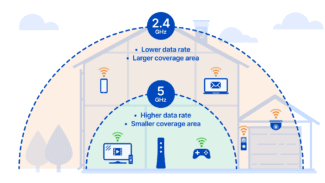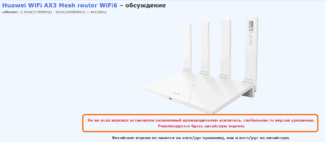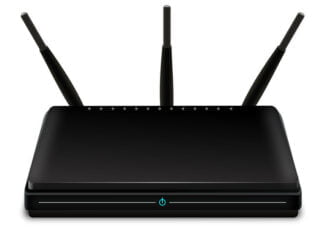The most ideal option would be if you set the channel selection in automatic mode. Then the router will analyze the channel load itself, and choose the best one for the best network performance.
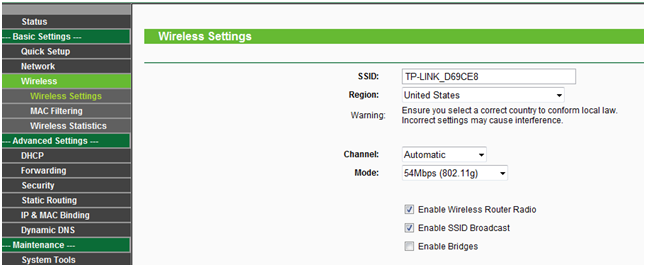
Wifi routers radius and range
It's a shame that wi-fi coverage can't be ubiquitous. It's a shame that you can't connect to your home wi-fi at work – the signal doesn't "get" it. But what is the range (coverage) of wi-fi routers and what does it depend on? Today we'll deal with this question and learn all about wi-fi coverage.
- The range of wi-fi routers tp link, asus, etc
- What affects the range of a wi-fi router
- 3 wi-fi routers with a long range
- How to increase the range of a wifi router improvised means
- Wifi router range adjustment
- How to increase the range of a wi-fi router with a repeater
Range of wi-fi routers tp link, asus, etc.
If we need range, say, to connect the network of devices separated by a dozen km is one thing, but in this case the antenna is aimed and no radius is out of the question. Or we have not got a signal in the arbor behind the bathhouse, here we are just talking about the radius, but the range is irrelevant. As not get the signal can both because the signal does not reach and from the fact that the signal is too strong and the device "chokes" and, perhaps, to solve the problem will need to reduce the power and range.
Since the value is spherical, the documentation usually shows the rounded average range for two identical devices with a typical antenna. This parameter depends on the power, which cannot exceed 100 milliwatts (20 dBm) in a household router, this roughly corresponds to 150 m range in a clear field or 50 m indoors. All these figures, as usual, are taken for a perfectly elastic, vacuum-packed spherical horse. Actually, the range itself is a complex parameter, which includes many characteristics of both points (both transmitter and receiver – the quality of reception is different). Not for nothing there are Wi-Fi detectors, with which specially trained people measure the actual signal level at different distances, precisely because it is easier to measure than to calculate.
I often hear from fans of this or that manufacturer, that "all is garbage, but asus", they lie. They are mercilessly lying, all manufacturers are limited by the same parameter of the upper power, and it does not matter who exactly produced Asus, Zyxel, D-link, tp-link, tenda, or others. Unless both the transmitter and receiver are from the same manufacturer.
Communication on related machines will be more stable and better, all due to the fact that each big-name Chinese saw their protocol for their devices. In general, if you plan to use several connected points. it is worth choosing the iron of the same manufacturer, due to their additions to the standard of communication, such a choice will make life a little easier. In all other cases you should pay attention to the support modes, technical parameters, the ability to change the firmware and other "little things" up to the possibility of connecting an external antenna (the very thing for range), but not a sticker on the body, after all, all made, if not at one, then at neighboring factories.
WiFi network coverage
Practice shows that such a parameter as the range of the wifi router plays an important role when choosing a router. After all, the further operation of your wireless network will depend on it.
You will be very annoyed if WiFi signal does not reach any part of your house or if the signal is available but the speeds are poor. So let's take a look at what the maximum range of a WiFi network can be, and how it can be increased.
Usually, for an ordinary city apartment, the most ordinary router is enough, its signal is distributed to all corners of the dwelling. But if you want to make a unified network with your neighbor, that is where the problems may arise.
It happens that a person lives in a private house and wants to have Internet access in the garage and the summer kitchen. Here we will have to think about the distance your router will cover and how it can be increased.
What can be the range
If you draw an analogy, the work of a wireless router can be compared with a mobile operator's tower, the only difference is that the router has a much smaller coverage area and it communicates via WiFi. The range of a standard router is about 100-200 meters, and that is if there are no obstacles, but if it has on its way reinforced concrete walls or metal structures, the coverage area can decrease to 50 meters.
Factors that affect the range of the network:
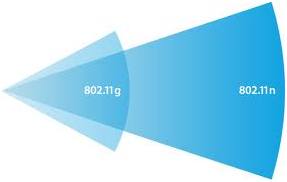
There are a variety of ways to increase the range of your wireless network. Both the location of the router itself and its settings affect this parameter. Let's see what you can do to increase your network coverage.
Getting your router set up correctly
Your wireless coverage area can be drastically reduced due to interference from your neighbor's WiFi devices, microwave ovens, or even your typical baby monitor.
To avoid this, pay attention to which channel your router is operating on. If the channels are the same as a nearby router, there may be network problems and a significant reduction in range. So go into the settings of your router and see what channel it is running on.

